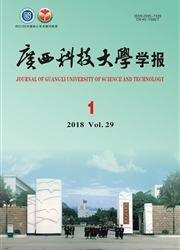

 中文摘要:
中文摘要:
探索人脑执行高级认知任务的认知模块协作过程.以简化四宫格问题为实例,采用ACT-R仿真实验和fMRI真实实验相结合的方法.基于任务分析提出问题求解的脑认知模块协调假设,在此基础上建立ACT-R仿真系统,并与fMRI数据拟合.拟合结果表明:两者反应时偏差0.16,脑区激活趋势平均相关度0.92,值均偏差0.03,仿真系统输出了各模块协同操作图.研究表明,主要模块之间既有并行协同,如视觉和目标控制以及记忆和表征,也有序列协同如视觉和表征,产生式系统则起到协调多模块作用.
 英文摘要:
英文摘要:
The goal of this paper is to detect the principle of cooperation in cognitive models when human beings do high level cognitive tasks. It takes simplified four Sudoku as an example. It used method of ACT-R (Adaptive Control of Thought-Rational) meeting fMRI (functional magnetic resonance imaging). The hypotheses on cooperation in cognitive models were proposed based on tasks analysis firstly. And then a cognitive simulate system was set up to simulate Sudoku problem solving to validate the hypotheses by comparing to fMRI results. It showed that,compared ACT-R predictions with fMRI results, difference on response time is 0.16, average correlation on BOLD (Blood Oxygen Level-Dependent) response of brain regions is about 0.92 and average deviation is 0.03. And models cooperation graph was output from simulation system. This study shows that there is parallel cooperation in main modules (such as vision and target control, memory and representation); there is also serial cooperation (such as visual and representation), the production system plays a coordinating role in multi-modules.
 同期刊论文项目
同期刊论文项目
 同项目期刊论文
同项目期刊论文
 期刊信息
期刊信息
